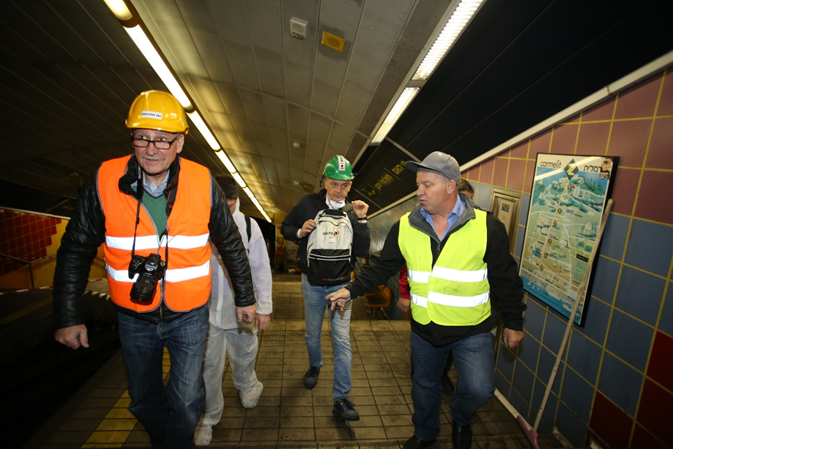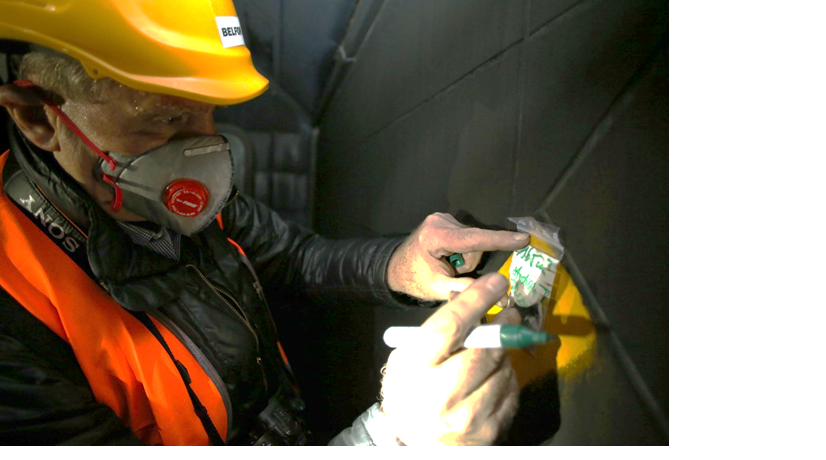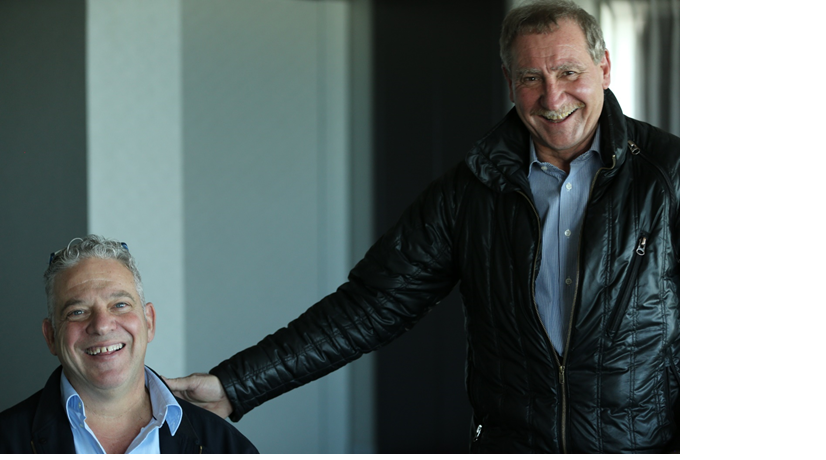- תיאורי מקרה בארץ
עוד תיאורי מקרה בארץ
דף הבית » תיאורי מקרה בארץ » Carmelit Project –Restoration of Underground train in Israel
Carmelit Project –Restoration of Underground train in Israel
In February of 2017, a fire broke out in one of the carriages of the Carmelit funicular railway at the Paris Square Station. The underground station, the first, or if you prefer, the last in the lower section of the tunnel built in 1959, is close to the sea and for fast transport to a variety of businesses located in Downtown Haifa and in walking distance from the portIn February of 2017, a fire broke out in one of the carriages of the Carmelit funicular railway at the Paris Square Station. The underground station, the first, or if you prefer, the last in the lower section of the tunnel built in 1959, is close to the sea and for fast transport to a variety of businesses located in Downtown Haifa and in walking distance from the port.
The Carmelit tunnel is some two kilometers long with a height difference from the Paris Square station, which is just 12 meters above sea level and the final station, Gan Ha'Em at the top of Mount Carmel is 275 meters.
Height differences along a relatively short distance result in significant differences in atmospheric pressure. Atmospheric pressure at the lowest point is, naturally, higher than at the highest point.
The high pressure generated during the fire due to the high temperatures that reached hundreds of degrees Celsius and the release of gasses – resulting from combustion, led to a massive flow of smoke, soot and other burnt elements along the tunnel. This in turn contaminated every station along the way. The tunnel was transformed into a perfect chimney which is what we saw when we arrived at the scene the day after the fire, February 5, 2017.

In cases like this one it’s clear that BELFOR International GmbH’s top consultants need to be called in, those who have experienced similar events in Europe and other locations in the world, so that they can share with us their experience, professionally document the fire’s effects and provide us and the insurance companies with recommendations on steps that should and must be taken.
We first met Dr. Rupert Pentenrieder in the 1990’s when Israel joined the huge international concern, BELFOR International GmbH, a giant in the world of damage restoration and rehabilitation both in Europe and globally. Rupert, as we used to call him, was one of the anchorpersons of Relectronic, one of the BELFOR companies that specialized in the rehabilitation of electronic equipment and machinery. Relectronic was the company’s professional backbone in all issues relating to research and development, training, consultation and more. Rupert was a charismatic person with a PhD in Chemistry from the University of Munich and has been the head of the technical support group for many years leading it to unprecedented achievements in the field of complex and large damage restoration projects.

Rupert loved coming to Israel, here he enjoyed the mild winter climate, our hospitality which he would praise at every opportunity and especially when we listened eagerly to his words. Rupert never refused an invitation from BELFOR Israel or from one of the local insurance companies who knew that Rupert was considered a leading expert in the eyes of all the large insurance companies. Rupert's word was considered "last word".
The day after receiving a telephone call from Nimrod Vered, the CEO of BELFOR Israel, Rupert came to Israel and, whilst waiting for his Italian colleague, Phillipo Emanueli, manager of the Simplon Tunnel restoration project, a tour was arranged for 8.3.17 to inspect the damage caused and to take wipe samples from surfaces at the Paris Square Station.
Five months after this visit, Dr. Pentenrieder suddenly passed away after a short illness.
Many of the best will have to struggle in order to fill the gap left following his demise.
Rupert’s last report
The last report written by Rupert became a work order that has been adopted by BELFOR Israel throughout the project, which ended seven months later.
These are the tests he carried out during his visit:
- Fast chloride tests to identify the different contamination types resulting from the fire.
- A visual inspection, primarily of changes in the color of exposed metals.
- Dust and soot examination.
- Testing pH levels.
- Conductivity tests.
- Taking samples from the site for analysis at BELFOR labs.
And these are the restoration steps he recommended:
- Initial cleaning of loose soot using HEPA vacuum cleaners.
- Dismantling, main cleaning inclosing multi-stage pressure washing using BELFOR's proprietary restoration agents.
- Precision cleaning.
- Sanitation and Air filtration work to remove and neutralize bad odors.
Prevention methods ordered by Rupert
- Removal of contamination from all areas.
- Prevention of cross contamination by erecting partitions along the tunnel.
- Removal of equipment from the contaminated area.
- Protection of metals from corrosion and the delay of oxidization processes using water repelling preservatives.
- Reduction of humidity down to 30%.
- Stopping wind to prevent the spread of combustion effects and results.
- Precise instruction of employees on the use of safety measures and especially all matters relating to the upper respiratory
- system.
- Quick restoration of electronic equipment.

IT was only natural that Dr. Pentenrieder’s recommendation were interpreted creatively by the company’s management and technicians. Amongst other things, a travelling platform was constructed which moved between stations making it possible to work on the upper part of the tunnel and equipment installed high up. Specialized machinery was used to collect the water run-off after washing and store them before they were transferred poisonous waste disposal sites. Air filtration systems were setup to relieve employees working underground and unprecedented safety precautions were implemented.
Light at the End of the tunnel
In September 2017, the partitions were removed, restoration equipment was removed, scaffolding was dismantled and the travelling platform, which had logged hundreds of kilometers going up and down the two-kilometer long tunnel, was returned to the company’s warehouse.
All the tasks were carried out and the tunnel was declared "free of Hazardous substances" and soot. Now it was the turn of the train engineers to install new carriages in the tunnel, to replace the cables, to paint the walls which, until recently have been contaminated with soot and to give back to the city of Haifa its very special means of transportation which spans and connects all the areas of Mount Carmel.
The gratitude and appreciation of the Carmelit’s management is difficult to express in words.
Looking forward to meeting you in Paris Square…


במקרה חירום, הזמן הוא המפתח. אל תחכו להחמרת הנזק – התקשרו אלינו עכשיו לקבלת הצעת מחיר לבלימה מהירה של הנזק.

